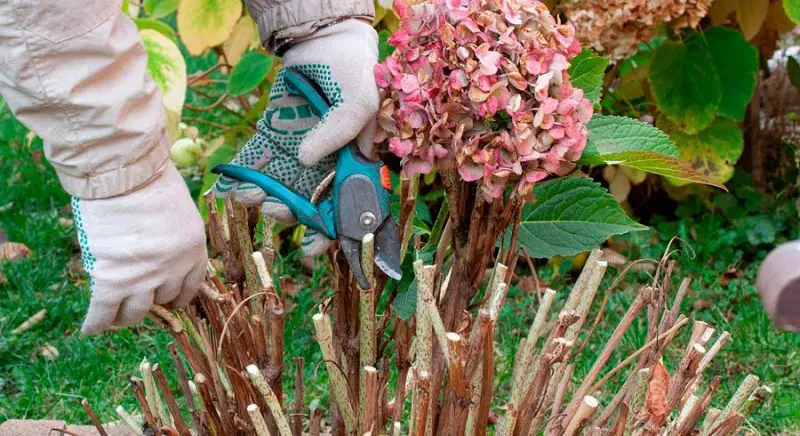Hydrangeas are beloved garden shrubs admired for their large, showy flower clusters and lush foliage. They bring vibrant color to landscapes, making them a favorite among gardeners. However, to keep hydrangeas healthy and blooming beautifully year after year, proper pruning is essential. Many gardeners wonder when to prune hydrangeas and how to do it without accidentally cutting off future blooms.
The timing and method of pruning depend on the type of hydrangea, as different varieties bloom on either old or new wood. Pruning at the wrong time can reduce flowering for an entire season. By understanding the growth habits of hydrangeas and applying correct pruning techniques, you can encourage healthy growth, abundant blooms, and a well-shaped shrub.
Understanding Why Pruning Hydrangeas Is Important

Pruning hydrangeas is not just about controlling their size. It serves several important purposes. Proper pruning rejuvenates the plant by removing dead, diseased, or weak wood, allowing more energy to be directed toward producing strong new shoots and vibrant flowers. It also improves air circulation within the shrub, reducing the risk of fungal diseases such as powdery mildew and leaf spot.
Pruning helps maintain a pleasing shape, preventing hydrangeas from becoming leggy or overgrown. A well-pruned plant also allows sunlight to reach all parts of the shrub, promoting even blooming and healthy foliage. Without pruning, hydrangeas can become crowded, resulting in fewer and smaller flowers.
Knowing the Right Time to Prune Hydrangeas
The timing of pruning is crucial and depends largely on whether your hydrangea blooms on old wood or new wood. Cutting at the wrong time can remove flower buds and lead to a season without blooms.
Pruning Old Wood Hydrangeas
Old wood hydrangeas, such as bigleaf (Hydrangea macrophylla) and oakleaf hydrangeas (Hydrangea quercifolia), form their flower buds on last year’s stems. Pruning too late in the season removes these buds and prevents blooming.
The best time to prune old wood hydrangeas is immediately after flowering, usually in late summer. This timing allows you to shape the plant while leaving enough time for new shoots to form and set buds for the next season. Waiting until fall or spring can accidentally remove buds that were formed during late summer.
Pruning New Wood Hydrangeas
New wood hydrangeas, including smooth hydrangeas (Hydrangea arborescens) and panicle hydrangeas (Hydrangea paniculata), bloom on current-season growth. These types can be pruned in late winter or early spring before new growth begins.
Cutting them back at this time encourages vigorous new shoots, which will produce larger flowers in summer. Because buds are formed on fresh growth, there’s no risk of losing blooms when pruning these varieties in early spring.
Recognizing Your Hydrangea Type Before Pruning
Before making any cuts, it’s essential to identify which type of hydrangea you have. Observing its bloom time, flower shape, and growth habit helps determine whether it blooms on old or new wood. This ensures you prune at the right time to maximize flowering.
How to Prune Hydrangeas Properly
Pruning techniques vary slightly depending on the hydrangea type, but some basic principles apply to all varieties.
Removing Dead or Damaged Wood
Always begin by cutting away dead, diseased, or broken stems. Dead wood is easy to recognize because it feels brittle and lacks green tissue inside when scraped lightly. Removing damaged canes improves air circulation and allows the plant to focus on healthy growth.
Shaping the Shrub for Better Growth
Once dead wood is removed, shape the plant to maintain an open, balanced form. For old wood hydrangeas, avoid cutting too deeply into healthy stems; focus instead on thinning crowded areas and trimming back stems just above healthy buds.
For new wood hydrangeas, you can cut stems back more aggressively, leaving a framework of strong canes. Cutting back to about one-third of their height encourages new, vigorous shoots.
Encouraging New Growth and More Flowers
Make cuts at a 45-degree angle, just above an outward-facing bud. This encourages new shoots to grow outward, improving airflow and creating a more attractive, vase-like shape. Avoid cutting too close to the bud or leaving long stubs, as these can lead to dieback or attract pests.
Pruning Specific Hydrangea Varieties
Each hydrangea type benefits from slightly different pruning approaches.
Bigleaf Hydrangeas
Bigleaf hydrangeas bloom on old wood, so pruning should be light. Focus on removing old, weak canes right after flowering. Only shorten healthy stems if necessary to shape the plant. Avoid heavy cutting in late summer or fall, as this removes buds set for next year.
Oakleaf Hydrangeas
Like bigleaf varieties, oakleaf hydrangeas bloom on old wood. Prune sparingly after flowering, removing dead or crowded stems. Minimal shaping helps retain their natural, elegant form.
Smooth Hydrangeas
Smooth hydrangeas bloom on new wood, allowing for more drastic pruning in late winter or early spring. Cutting them back to about six to twelve inches above the ground encourages strong new growth and larger flowers.
Panicle Hydrangeas
Panicle hydrangeas also bloom on new wood. Pruning them in late winter or early spring promotes full, conical flower clusters. Removing older, weaker canes entirely can rejuvenate older shrubs.
Common Mistakes to Avoid When Pruning Hydrangeas
Pruning mistakes can drastically affect blooming and plant health. One common mistake is pruning old wood hydrangeas in late winter or spring, which removes flower buds. Another mistake is cutting too much at once, weakening the plant and delaying recovery.
Using dull or unclean pruning tools can cause jagged cuts, which heal slowly and invite disease. Always sanitize tools before and after pruning to prevent spreading infections.
Over-fertilizing right after pruning is another common issue. Too much nitrogen encourages leafy growth rather than flowers, so use a balanced fertilizer sparingly.
Caring for Hydrangeas After Pruning
After pruning, proper care helps hydrangeas recover quickly and produce healthy blooms.
Feeding and Watering
Applying a balanced fertilizer in early spring encourages strong shoot and flower development. Water deeply and consistently, especially during dry periods, as hydrangeas require adequate moisture for optimal flowering.
Mulching to Protect Roots
Adding mulch around the base of the plant conserves soil moisture, regulates temperature, and suppresses weeds. Keep mulch a few inches away from the stems to prevent rot.
Monitoring for Pests and Diseases
Fresh cuts can make hydrangeas vulnerable to pests and fungal infections. Inspect plants regularly and treat early signs of problems promptly to protect new growth.
Seasonal Considerations for Pruning Hydrangeas
Pruning practices should be adjusted based on the season. In winter, only prune new wood hydrangeas; old wood types should be left untouched until after blooming.
In summer, light pruning after flowering helps old wood varieties set buds for the next season. Avoid pruning in fall, as this can stimulate tender new growth that may be damaged by frost.
Encouraging Continuous Blooms Year After Year
Consistent pruning at the right time, combined with proper care, ensures hydrangeas produce abundant flowers every year. Removing spent blooms during the growing season, known as deadheading, can encourage repeat flowering in some varieties, especially smooth hydrangeas.
Providing the right balance of sunlight, water, and nutrients along with correct pruning practices creates healthy, long-lasting shrubs that remain garden showpieces for many seasons.
FAQs About Pruning Hydrangeas
When is the best time to prune hydrangeas?
The best time depends on the type. Old wood hydrangeas should be pruned right after flowering, while new wood types are pruned in late winter or early spring.
How do I know if my hydrangea blooms on old or new wood?
Check when it flowers and observe growth habits. Old wood varieties bloom on last year’s stems, while new wood types bloom on current-season growth.
What happens if I prune hydrangeas at the wrong time?
Pruning at the wrong time, especially for old wood hydrangeas, can remove flower buds and lead to fewer or no blooms the following season.
Should I cut hydrangeas back to the ground?
Only smooth hydrangeas benefit from being cut back hard in early spring. Most other types need lighter pruning to avoid damaging future blooms.
Do hydrangeas need pruning every year?
Yes, light annual pruning keeps shrubs healthy, removes dead wood, and promotes better flowering, but heavy pruning is not always necessary.
Conclusion
Knowing when to prune hydrangeas and applying the right techniques is essential for achieving beautiful blooms and healthy plants. By understanding whether your hydrangea blooms on old or new wood, you can time your pruning to encourage vigorous growth and abundant flowers.
Pruning not only shapes the shrub but also rejuvenates it, improving air circulation and overall health. With proper care and attention, your hydrangeas will reward you with large, colorful blooms that brighten your garden year after year.






